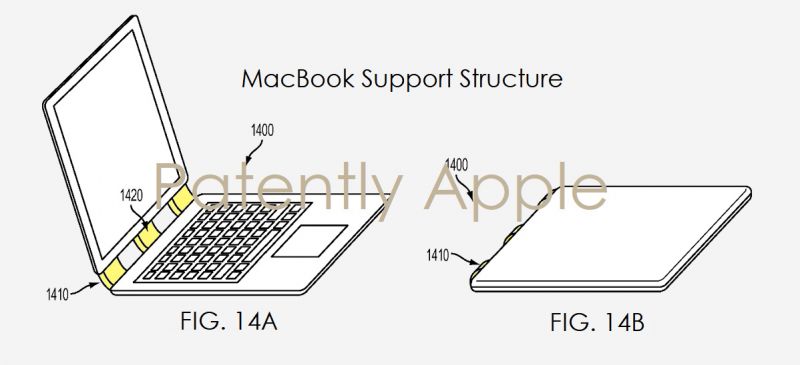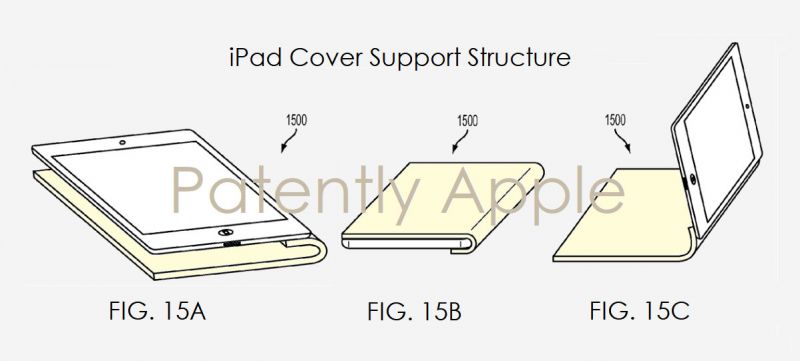Apple's new patents showcase Flexible support structures
Apple files a series of foldable product accessories which can be applied to iPhone, iPad and iMacs.;

Apple has been considering flexible product patent ideas for quite a while. Back in 2013, the company had its first flexible/foldable device patent that described a new fabric housing for an iPhone, this was later granted in 2017. Similarly another a foldable patent for Watch bracelet surfaced in 2016.
Apple filed a new patent recently at US Patent and Trademark Office, which shows us about a series of foldable product accessories which can be applied to iPhone, iPad and iMacs.
An iPhone foldable accessory (credit: Patently Apple)iPhone: Apple’s patent in the above figure illustrates an accessory for an iPhone, which is an adjustable support structure. An opening in the upper layer of the product and inserting grills at the bottom layer can also be seen.
A MacBook foldable accessory (credit: Patently Apple)MacBook: This patent illustrates an adjustable support structure that provides support to the monitor portion of a MacBook. As shown in the figure, three separate hinge structures can be seen below the monitor which seems to be adjustable.
An iPad adjustable accessory which acts a stand. (credit: Patently Apple)iPad: This patent illustrates an adjustable cover for the iPad, which can also be used as a stand and protecting cover.
An iMac adjustable accessory (credit: Patently Apple)iMac: Apple’s patent shows another illustration, which appears to be a foldable support structure for iMac’s desktop screen.
A Apple Watch accessory (credit: Patently Apple)Apple Watch: This patent shows a flat adjustable cable for the Apple watch.
"The adjustable structure may include two rectangular and parallel layers of flexible material that are joined by a partially flexible coupling positioned between the layers. The coupling permits the layers to longitudinally displace while it prevents the layers from perpendicular displacement. Along the breadth of one longitudinal end, the coupled layers are prevented from all displacement by a rigid fixture. Along the breadth of the opposite longitudinal end, the coupled layers are permitted to longitudinally displace only against compressive friction provided by a displacement brake," states Patently Apple on its website.
However, we still don't know how many of these patents will make it to real life.




